#peterskirche
Explore tagged Tumblr posts
Text
Switzerland, Day 1 - Zurich
Switzerland, day 1, Zurich. Though Zug would be my base in Switzerland. A small town 30 minutes train ride from Zurich in the canton of Zug. Not really a base; my friend has been living there for over 15 years, Kim. Having no plans whatsoever for Switzerland (nothing new), Kim had kindly invited me to stay with her. Heading back to Europe it felt like going home, going back to familiarity. Having…
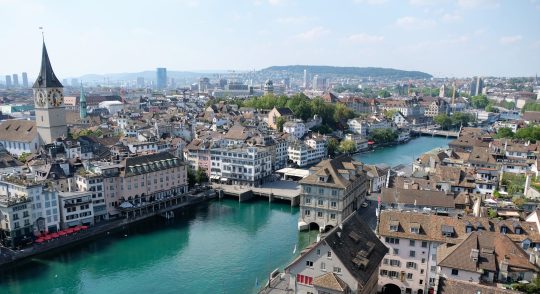
View On WordPress
#Carolingian#Carolingian dynasty#Charlemagne#Fraumünster#Funicular#Grossmunster#Huldrych Zwingli#King of the Franks#King of the Lombards#limmat#Pollyterrasse#Polybahn#Predigerkirche#Reformation of Switzerland#river Limmat#St. Peter Church#St. Peterskirche#Swiss-German#Switzerland#UBS Polybahn#Zurich
0 notes
Text

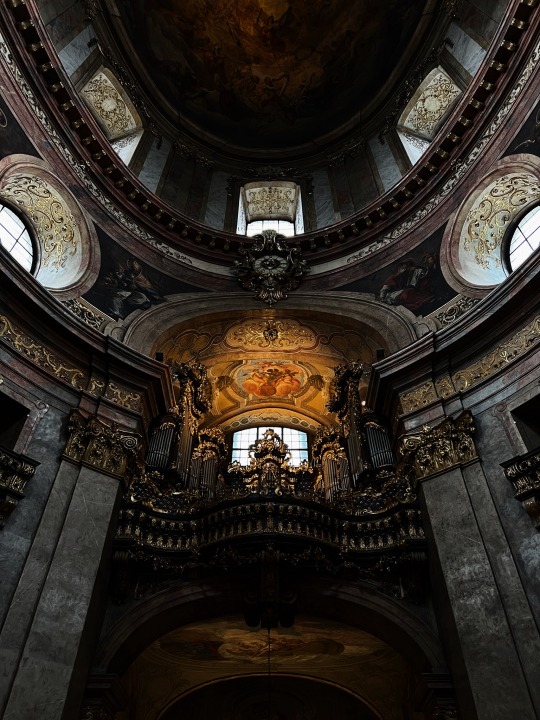
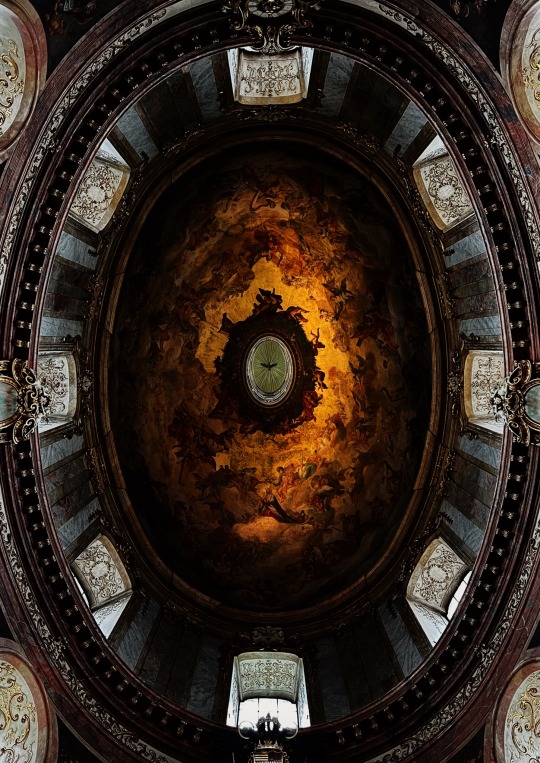
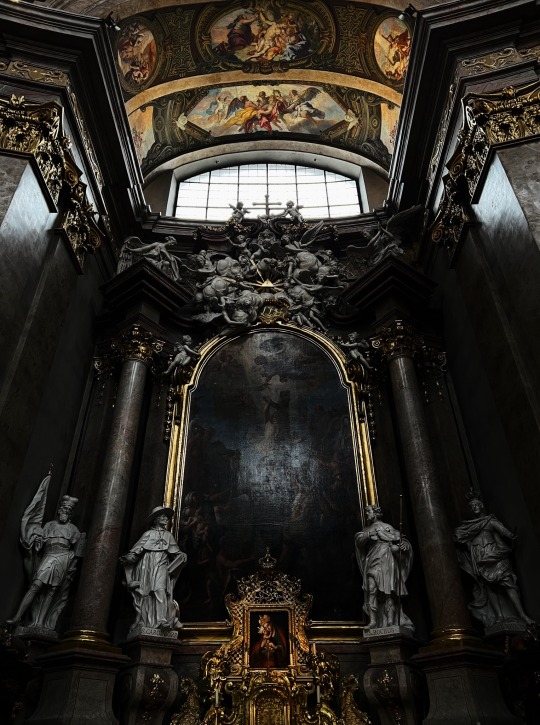
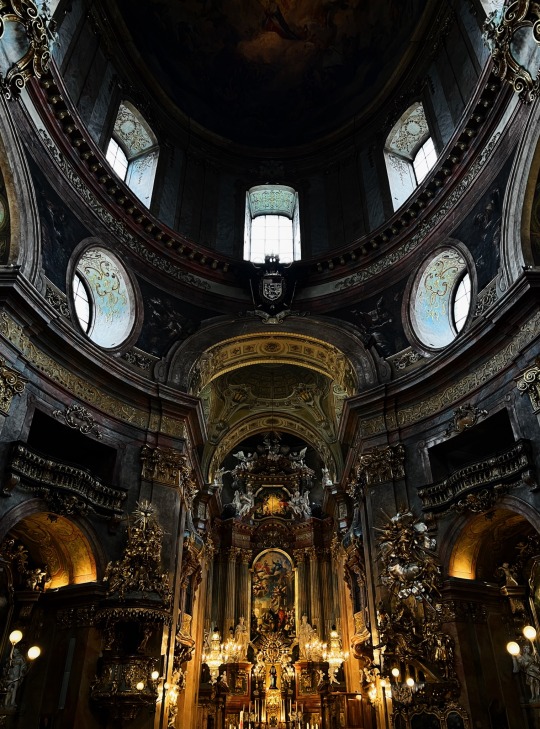
peterskirche . MDCCXXXIII | vienna , austria
#baroque#church#dark#dark aesthetic#architecture#architectdesign#aesthetic#photography#travel#adventure#moody aesthetic#aesthetic tumblr#goth aesthetic#austria#wien#vienna#salzburg#goth#gothic#gothcore#dark core gothique#buildings#gold#beauty#artists on tumblr
521 notes
·
View notes
Photo

Grossmunster
Grossmünster (“large cathedral” in German) is a Romanesque ex-cathedral situated in the heart of Zürich, Switzerland, which was built over the course of the 11th and 13th centuries CE. According to legend, the Holy Roman Emperor Charlemagne founded Grossmünster around c. 810 CE to house the bones and relics of the early Christian martyrs St. Felix, St. Regula, and St. Exuperantius who were believed to have fled to Zürich and died in city during the 3rd century CE. Grossmünster is Zürich's most recognizable and famous landmark by virtue of its iconic twin towers, and it retains a place of prominence in Protestant Christianity due to its role in the Protestant Swiss Reformation, which began at the direction of Ulrich Zwingli in 1519-1520 CE. Along with Fraumunster, Predigerkirche, and St. Peterskirche, Grossmünster is one of the oldest and largest churches in Zürich. Its triple-aisled crypt is also the largest in Switzerland.
Legends & Medieval History
Legend has it that the patron saints of Zürich - Felix, Regula, and their servant Exuperantius - were once members of the Christian Thebaic Legion, which had its base in what is now the Swiss canton of Valais. Due to the intense persecution of Christians by Roman authorities in the region, Felix, Regula, and Exuperantius fled to Zürich at some point in the late 3rd century CE. When Roman authorities in Zürich discovered their Christian beliefs, the Roman governor of Turicum - Roman Zürich - forced the three Christians to be boiled in oil and drink molten lead. Soon thereafter, he ordered the three Christians beheaded. Folklore has it that after their executions, Felix, Regula, and Exuperantius calmly picked up their severed heads and walked 40 paces - or about 27 m (30 yards) - to the place where they wished to find eternal rest and ascend to heaven. About 500 years later, Charlemagne (r. 800-814 CE) came to Zürich in pursuit of a large stag that he had seen while out hunting around Aachen, Germany. Upon arrival in Zürich, Charlemagne's horse stumbled over the graves of the three saints, and it was there that Charlemagne ordered the construction of a new church along the Limmat River: the Grossmünster Cathedral.
The basilica of Grossmünster was constructed in six stages from c. 1090-1230 CE and was erected over a 9th-century CE Carolingian building of similar dimensions. Architects made periodic renovations and structural alterations to Grossmünster in later centuries; most notably, increasing the cathedral's southern tower to match the height of the northern tower in the late 15th century CE. Grossmünster's organization and activities were overseen by the bishopric of Konstanz, Germany until the advent of the Reformation in the 16th century CE, and Grossmünster was both part of a secular canon's monastery and a parish church until that time too.
During the Middle Ages, Grossmünster's fortunes were intricately connected to those of Fraumünster, which was the nearby Benedictine convent located only 180 m (551 ft) across the Limmat River. These two churches stood facing from one another, dominating Zürich's skyline as the two largest structures in the city and as pillars of the influence and power of the Catholic Church in northern Switzerland. The two churches were, however, in perpetual rivalry with one another for control over the relics of St. Felix, St. Regula, and St. Exuperantius. The two churches shared and publically showcased these relics in an elaborate urban procession held annually on September 11th. (That day is the feast day of the three saints; this day is still celebrated as a holiday in the city of Zürich.) Zürich emerged as an important pilgrimage center by the late Middle Ages as the faithful visited the relics of the three saints while en route to other pilgrimage centers like Santiago de Compostela in Spain, the Vatican in Rome, Italy, and the Benedictine Abbey in Einsiedeln, Switzerland, which lies only 40 km (25 miles) to Zürich's southeast.
Continue reading...
26 notes
·
View notes
Text

St. Peter (Peterskirche) in Vienna. The dome with lantern was designed mainly by Matthias Steinl, the frescoes made in 1713 represent the Coronation of Our Lady, the work of Johann Michael Rottmay.
129 notes
·
View notes
Text
Lindau
Lindau, das auch “Lindau am Bodensee” heißt, ist eine Stadt in Bayern mit sechsundzwanzigtausend Leuten. Die Altstadt, die sehr schön und historisch ist, liegt auf einer kleinen Insel im östelichen Teil des Bodensees. Es befindet sich in der Nähe von beide Österreich und der Schweiz, und auch von dem deutschen Land von Baden-Württemberg. Jedes Jahr seit 1951 finden die Lindauer Nobelpreisträgertagungen in der Stadt statt, und viele Menschen kommen nach Lindau um wichtige Gespräche zu führen. Lindau hat zwei großen Bahnhöfen: Lindau-Insel, und Lindau-Reutin, der auf dem Festland liegt. Die Stadt ist beliebt für Touristen wegen ihrer Lage am Bodensee und ihrer gut erhaltenen Altstadt. Manche Sehenswürdigkeiten sind das Alte Rathaus, das Münster Unserer Lieben Frau, und die Peterskirche, die eine der ältesten Kirchen am Bodensee ist.
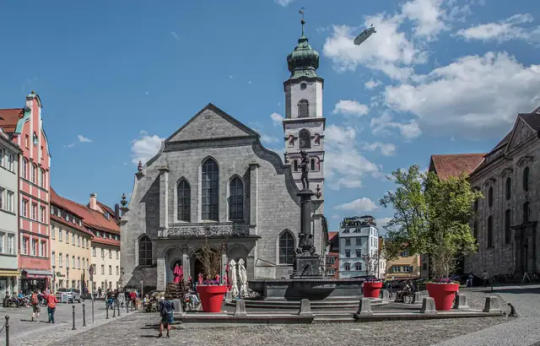


#langblr#learning languages#language learning#learning german#german language#germanblr#lindau#lindau am bodensee#bayern#germany#agtew
15 notes
·
View notes
Text




P1 Karlskirche
P2 Michaelerkirche
P3 Peterskirche
P4 Stephanskirche
⛪️✝️
#love and deepspace#soft academia#postlarım#love#breeze#green moodboard#lovers#blue moodboard#dark academia#foxian
5 notes
·
View notes
Text

Hl. Leo III.
Gefeiert Am 12. Juni
Hl. Leo III. Papst * um 750 in Rom † 12. Juni 816 daselbst
Leo war Priester in Rom und wurde 795, in unruhigen Zeiten, zum Papst gekrönt. Nach seiner Wahl sandte er die Schlüssel zum Grab des hl. Petrus und das Banner der Stadt Rom an den Frankenkönig Karl und erkannte damit dessen Schutzherrschaft über Rom an. Seine Gegner hatten Leo zuvor Meineid und Ehebruch vorgeworfen, ihn bei der Prozession am Tag des Apostels Markus überfallen und misshandelt. Leo floh 799 zum Frankenkönig nach Paderborn, erhielt die Zusage seines Schutzes und versprach wohl als Gegenleistung die Krönung Karls zum Kaiser. Am Christfest des Jahres 800 krönte er Karl in Rom zum Kaiser. Ob die Initiative zu dieser Kaiserkrönung von Karl oder von Leo ausging, ist umstritten; jedenfalls stellte sie einen Wendepunkt in der europäischen Geschichte dar; sie kennzeichnet das Ende der päpstlichen Abhängigkeit von den östlichen Kaisern. Karl, der Große, versuchte immer wieder, sich in Bereiche des Papstes einzumischen: 809 ließ Karl auf einer Synode in Aachen das "Filioque" anerkennen; Leo III. verhinderte aber, dass das "Filioque" in das Nicänische Glaubensbekenntnis eingefügt wurde, er ließ in der Peterskirche Tafeln mit dem unveränderten Glaubensbekenntnis aufhängen und vermied so den Konflikt mit der Ostkirche. Bei der Kaiserkrönung von Karls Nachfolger Ludwig in Aachen 813 war Leo nicht anwesend, er wollte offenbar die Macht der fränkischen Kaiser über Rom nicht uneingeschränkt anerkennen. Dennoch begann unter Leo die Entwicklung zu einer Gesellschaft, in welcher der Kaiser die weltliche und der Papst die geistliche Macht innehatte.
#Hl. Leo III.#Papst#* um 750 in Rom#saints#saint#saint of the day#heiliger des tages#god#gott#christ#jesus#religion#lord here i am#christianity#faith#glaube#holy#heilig#catholic#roman catholic#catholic posting#catholicism#christentum#katholisch
2 notes
·
View notes
Note
Hi! May I ask where your icon is from?
sure! It´s a detail of a wallpainting (Annunciation, around 1400) in the Martins Chapel in St. Peter, Basel, Switzerland. It´s on the right side in the upper corner. it is a little figure behind the curtain peaking in the architecture where Mary is sitting and reading
10 notes
·
View notes
Text
Old Vienna
Am Wiener Graben in alter Zeit...
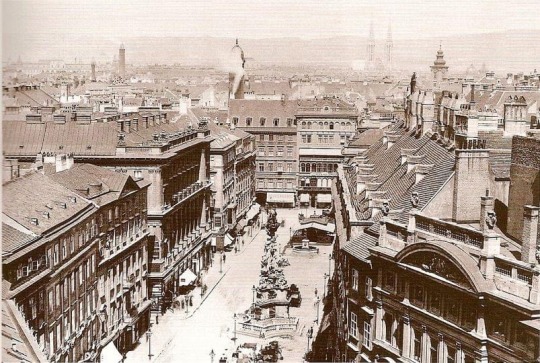
Der Aufschwung des Grabens setzte zu Beginn des 19. Jahrhunderts ein.
Es siedelten sich immer mehr Luxusgeschäfte an, wobei die Läden mit künstlerisch wertvollen Schildern versehen waren. Durch diese Ansiedlungen und den zunehmenden Verkehr wurden die beiden Häuserblöcke an den Enden des Grabens immer mehr zu Hindernissen. Die Erste österreichische Spar-Casse ließ 1835 die Eckhäuser zu den Tuchlauben abreißen und bis 1838 ihr heute noch bestehendes Hauptgebäude errichten. 1840 wurden die Gebäude am Nordwestende des Grabens entfernt.
1866 begonnen, wurden die Häuser am östlichen Ende zwischen Grabengasse und Schlossergasse (beide aufgelassen) entfernt, wodurch der Graben nun direkt in den Stock-im-Eisen-Platz überging und über diesen der freie Blick auf den Stephansplatz möglich wurde. Im 19. Jahrhundert wurden fast alle alten Häuser am Graben, ausgenommen das Palais Bartolotti-Partenfeld, durch Neubauten ersetzt.
Die Jungferngasse wurde verbreitert und damit ein offener Zugang zur Peterskirche geschaffen.
Der Trattnerhof wurde 1911 durch einen zweiteiligen Neubau ersetzt, der mittig einen (nach dem Hof benannten) Durchgang zur Goldschmiedgasse erhielt.
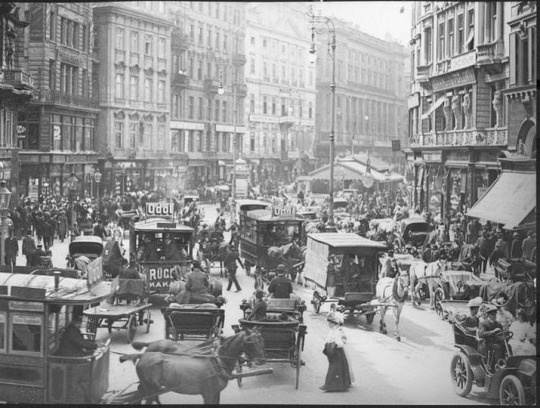
Der Graben war nun nicht nur ein Ort zum Luxuseinkaufsbummel und für Kaffeepausen, sondern auch stark befahrene Verkehrsfläche.
Die Anfang des 20. Jahrhunderts noch eingesetzten Pferdeomnibusse wurden durch Linienautobusse ersetzt, für die der angrenzende Stephansplatz einen Verkehrsknotenpunkt bildete. Pferdefuhrwerke und Fiaker wurden in den 1910er und 1920er Jahren von Autos verdrängt, für die sukzessive immer mehr Platz benötigt wurde.
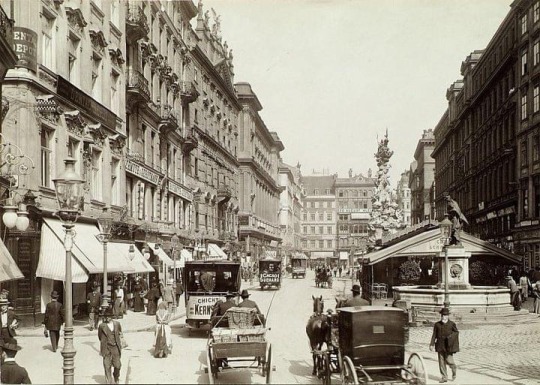
Der Verkehr auf dem Stock-im-Eisen-Platz, Verbindung vom Graben zum Stephansplatz, wurde zuletzt von oben geregelt; die Kabine des Verkehrspolizisten befand sich auf einem hohen Ständer über dem Gewühl.
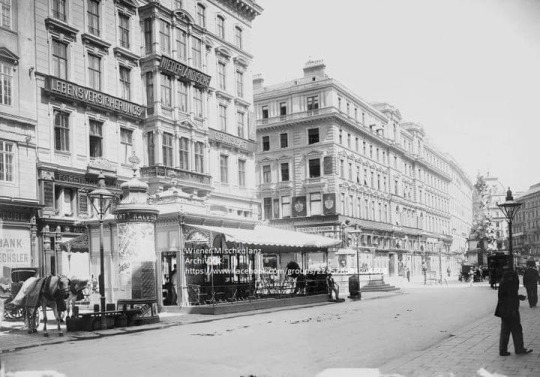
Am 4. Dezember 1950 wurde hier die erste Neonbeleuchtung Wiens in Betrieb genommen.
Heute ist der Graben wieder eine der wichtigsten Promenade- und Geschäftsstraßen Wiens.
Er wird von Touristen stark frequentiert und in der Sommersaison von Gastronomiebetrieben mit zahlreichen Schanigärten belegt. Gemeinsam mit Kohlmarkt und Kärntner Straße bildet er das sogenannte „Goldene U“ an traditionsreichen Altstadt-Einkaufsstraßen, die über gehobenes Angebot verfügen und als Fußgängerzonen gestaltet sind.
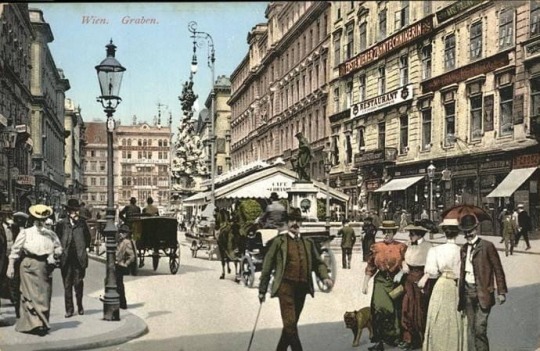
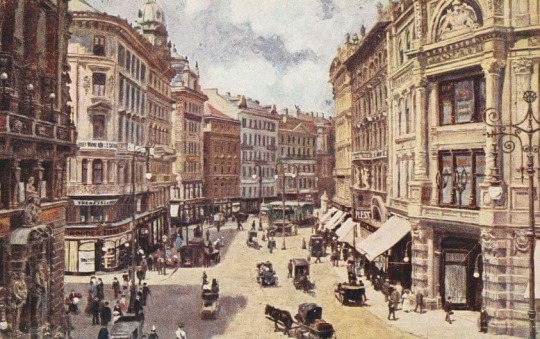
2 notes
·
View notes
Text
1 note
·
View note
Text
St. Peterskirche, Church(Munich, Germany) 聖ペーター教会★★
I visited St. Peterskirche in Munich (^o^)
The oldest church in Munich (^o^)v
ミュンヘンにある聖ペーター教会に行って来ました(^o^)
ミュンヘン最古の教会(^o^)v



0 notes
Text
Godmother Death: A Sapphic, Genderbent "Godfather Death" Retelling
Once, my father Frederick went into the woods. It was a cold night in Leipzig when I, Sieglinde, was born. I was the twelfth child of a woodcarver and washerwoman. We lived in a shanty by the opera house, and I grew up hearing the sound of music. Great arias poured out into the gutter that I collected in my memory like spilled coins.
“One by God, two by the Devil, three by Death,” papa always said. In the alehouse late at night, papa spoke of how he walked miles and miles, begging for mercy for a good godparent for me.
I was born an ill omen, on All Soul’s Eve, in a caul. It snowed the day I was a newborn suckling infant on mama’s teat, and my elder sisters Johanna and Ilke and the rest of my brothers crowded around my swaddled, nursing form. There was not enough food or money to last the winter.
To win fortune’s favor and full larders, father meant to bargain with God.
But God plays favorites, papa said. So, he turned Him away. God could not be my godfather.
Next came old Samiel, the Black Huntsman. He is wicked, and made a terrible offer, papa thought, so into the barrel of papa’s rifle Samiel’s soul went.
Papa was always good at trapping things. Once, papa fit the moon into a thimble and blotted out the night for a whole week. The crops in Leipzig didn’t grow, and Mme. Friegler’s voice went to shards the whole time. When a cow was born with two black heads, papa put the moon back to ward off God’s wrath.
So thereupon sauntered my bold father Frederick, drunk off cheap ale, and into the darkest part of the forest he went, where sunlight never touches, and winter always freezes.
He found a graveyard of souls.
Death was there, tending frozen roses. And Samiel was still trapped in papa’s gun.
“Will you be my dear Sieglinde’s godmother, Frau Todd? I have a handsome demon in exchange,” papa boasted.
Death smiled. Frau Todd is just, after all, and always takes pity on souls. “You know, Frederick, Heaven and Hell talk often about your penchant for stealing things with sweetened words. Just last year, you bribed a sparrow to give you two weeks off the back of summer so that you had more time to complete the legs of a chair.”
“Though silver-tongued, Frau Todd, I am also an honest man. Is there any punishment for bargaining?”
Frau Todd laughed. “No, dear Frederick, all is right in my eyes. I see you have a good heart, and that Sieglinde will grow to be a great woman. So yes, you shall free my husband the Black Huntsman and set Samiel back upon his Wild Hunt as Erl King, and I shall be dear Sieglinde’s godmother. She cannot fail with me by her side. I will make Linde rich, but moreover, kind.”
And so, my godmother was the talk of Leipzig. At Peterskirche, a flock of black crows attended my baptism, complete with their Lady in black lace. I grew up under Frau Todd’s wing, and inherited father’s tricksome tongue.
I was sixteen. Frau Todd had a cabin in the forest, where she taught me women’s crafts: weaving souls. Dousing with spring-green twigs. How to bake the best bread for my future husband.
Frau Todd herself was married to Samiel the Black Huntsman. But she lived alone, and only visited him when the moon was full, or to deliver a month’s worth of dinner in an enchanted silver pail. Samiel ate souls that were too weak to pass on into Heaven or Hell. As for what Frau Todd ate – anything hearty, bloody, and half-alive.
“Mama Todd, what would you trade for the jewel on your throat?” I asked Frau Todd the day autumn came.
Frau Todd smiled. “Only a fresh beating heart, Linde.”
So, I baked a blackbird’s heart into a veal pie. The bird’s heart was alive by my magic, bloody and thrumming, when Frau Todd bit in.
“I see you are becoming quite the thief of life, just like your father Frederick,” Frau Todd smiled, her blonde hair and winsome blue eyes beaming. She wiped the blood on a pearly napkin, then devoured the rest of the pie.
Into my hands Frau Todd placed the jewel. It was a large ruby that glimmered with black stars.
“What are the virtues of this stone, Mama Todd?” I inquired, fascinated.
Frau Todd was skinny as a spindle, dainty and precise, and always wore white, with a red ribbon in her hair. Almost skeletal, but not unpleasant, with long honey-colored hair and eyes that burned like the sky. I felt she was always watching me. “That is the Jewel of Nocht. It can set to sleep anyone who you direct it at.”
I had much fun, setting my schoolmarms to sleep. Frau Todd had made us rich, and I and Johanna and Ilke all attended a girl’s Catholic finishing school. Ilke was even learning opera from Mme. Friegler. I was a stickler for poetry. But the nuns did not like me slipping away to kiss cute choir boys and woo schoolgirls with their curling, sweet-smelling hair. So, I enchanted the nuns into snoring.
“Linde, it is dangerous what you do!” Johanna giggled, embroidering a rose and thistle. She loved sewing. Mama was now a fine lady, but her hands would always be cracked from her time with lye and river rocks as a washerwoman. Mama did not want her daughters to know pain. And her sons had all made papa’s woodcarving business a booming industry. They each carved different parts of tables and shipped them out of Rostock to international waters. “You’re too much like papa, Linde,” my sister continued. “One day, it will do you in.”
“Say Johanna?” I mused, clacking my nails on my chalk tablet. “How much is the smell of a thistle worth?”
“Do thistles smell?”
“To birds.”
“Then I’d say… they’re worth laughter. Laughter can’t be sold, and often, laughter is a lie,” Johanna chuckled, used to my joking. “Shall I trade this thistle and rose?”
“Only their smell, dear Johanna.” I tickled her. She burst out laughing in tears as I hit her sweet spot.
Thistles smelled like rain, I learned.
That night, at Frau Todd’s house, I used the smell of roses and thistles, perfected in Johanna’s virginal mind, to sweeten Frau Todd’s stew.
Frau Todd’s face was electric. “This stew has life in it!” she beamed. “Linde, you are so clever with your magic.”
Frau Todd gulped it down, but it never seemed to cling to her thin, thin shape. Death is always hungry, it seems.
“I have the best teacher, Mama Todd,” I demurred.
We finished the soup in companionable silence as the fire crackled.
“Sieglinde, it is time,” Frau Todd said, her hair from her blond chignon falling a bit to her shoulders. “You are sixteen now. I will teach you my secrets.”
It was the moment I had been angling for, caressing Frau Todd’s tongue with delicious concoctions. Though I loved her like a godmother, I wanted more power.
“Are you sure, Frau Todd?” I said innocently.
“Do not act the sheep when you are a wolf, Linde. You are as wily as me.” Frau Todd smiled. “You are a clever girl, my Linde. Come see my final secret.”
She took me deep into the heart of the forest.
A patch of heart-shaped purple leafed herbs bloomed with fiery orange flowers.
“These are my precious deathsflower, goddaughter” Frau Todd sighed sweetly, inhaling their overripe scent. “Crush and make a powder medicine of this for any patient you have. If I appear by the head of their bed, they will survive, and you may cure them. But if I appear at the dying man or woman’s feet, my Linde, I mean to drag them to either God or my husband Samiel. There is no stopping me then.”
“Thank you, Frau Todd,” I said, tears in my eyes, and hugged her, hard, feeling I had just lost my last bit of innocence.
I set up shop in Berlin in the Old City by the orangerie. The deathsflower grew wherever I went, in secret gardens and groves, appearing only for me. I made my way as a physician, in a time when Europe was being electrified and Prussia was bending to welcome women into the arts and sciences.
Some thought me a quack, but I cured when I could cure, and put to sleep with my Jewel of Nocht those bound for brighter shores, Frau Todd a vigil keeper at their toes. The families always felt overwhelming peace under my care, and godmother often took tea with me in my little flat by the opera. I still fancied the arias and had just seen Cosi fan Tutti for the first time. It could not beat The Magic Flute, but it had its charms.
“Where do you take them, Mama Todd, truly?” I asked her over tea one day. I was so dark in comparison to her, a night girl, black hair, almond-brown eyes, tan skin, freckles and moles. I was beautiful in a way Death was not, thrumming with life and humor, and she was glorious in a way I could never be. Where Frau Todd was youthful, I would always be mortal, and where my magick worked in little tricksy ways like papa had taught me, hers was vast. Little slices of time and place I could carve up, bottle, and trap were mine.
But all the stars were my godmother’s. Great gaseous balls. With angel’s hearts. Beating, bloody, winged hearts that only Death could eat.
Frau Todd smiled dreamily. “And what if God has as much appetite as I, or Samiel?” she teased. Only, I could not tell if she was serious or not.
“So, a Heaven’s Gate is the same as a Hellmouth? God eats His chosen souls?”
I shivered. Night set over my heart.
Death’s lips thinned.
“Everything is hungry, goddaughter. From the worms to God Himself. A grave is a grave, my Linde. We all rot, in the end.”
I winced, hard.
Frau Todd smiled in afterthought: “Yes, everyone perishes. Except for me, of course.”
The King of Prussia was marked for death. Some say he had crossed a witch on his campaign in France. Most thought it was the Hapsburg curse. All I knew was, there was land and a title and limitless purse for any lass or man that could cure him.
I hauled my belongings to court, my cart and best oxen and phials of medicine, and my precious deathsflower, and I went deep into his palace. Finally, it was my turn.
The Jewel of Nocht gleamed like a rose on my chest. Frau Todd was at his head and nodded serenely. Smiling, I cured the king.
There was a ball held in my honor. I was named Lady Sieglinde, First of Her Name. The royal coffers were mine. So was a palace back in dear old Leipzig – the King had done his research.
I charmed the corsets off many lasses for a tussle in silken sheets, then sang the britches off several noblemen. With Frau Todd’s help, I distributed birth control made especially by my cultivated strains of sacred herbs throughout the palace, and I grew even more popular.
But most on my mind was Princess Hilda. She was beautiful – curvy, shining brown ringlets, always dressed in green like Lady Greensleeves. I set to courting Hilda in secret, sang her the eponymous song meant originally for Anne Boleyn, even wrote her some of my poems.
As we lay in my palace’s bed – Hilda was there to “study mathematics with the King’s savior” – Hilda asked: “My dearly beloved Linde, what is that jewel?”
“What is the truth worth to you, my Hilda?”
She had eyes like a doe. I realized then, all like a crashing train, that I was deeply in love.
“A rose.” Hilda beamed.
“And a thistle?” I said, shaking.
Hilda giggled, staring at the silver astrolabe over my room and study. “Whatever you say, snake charmer.”
I went home, and bought the rose and thistle embroidery from Johanna, and I gave it to Hilda… wrapped with a promise ring with a chip from the Jewel of Nocht.
We met back in Berlin.
“Let’s run away to America, Sieglinde, together,” Hilda beamed, ravishing me with kisses. Heat grew in my legs. She made love to me to claim me.
“I cannot do that Princess Hilda. My medical license, my land and holdings, my livelihood, are all here.”
Hilda soured. “Am I worth anything to you but my title?”
“Hilda, you are the blackbird heart in my pie.”
The comely princess forgave me, kissing me through our tears. “You say the funniest things, strange Sieglinde.”
The next day, Hilda accepted a marriage offer from the Duke of England.
Her promise ring came to me by post.
I was bereft. I wanted to bargain, but for once
I had nothing
to give.
Death is always hungry. And never hungrier than when it comes to Maidens. Death and the Maiden, entwined.
Hilda fell sick with her father’s illness in a week. The King of Prussia said: “Anyone who can cure Hilda gets to become King. The engagement to the Duke of England is annulled. I will hand over my crown to whosoever saves my daughter.”
I disguised myself as a man and cast a glamour of forgetting over myself, to blend in. Court had forgotten Sieglinde the King’s Savior, secure as I was in my bastion in Leipzig, but I had not forgotten the riches of palace.
The riches all paled in comparison to my beloved. I cursed myself every day for not sailing away to America with Hilda and starting over.
I shorn my hair, donned men’s britches, and rode in through a storm on my palomino gelding, death like a decaying rose in my shadow.
There Frau Todd stood, at Hilda’s feet.
Hilda was comatose.
“Mama Todd, you cannot take her, I love her!” I pleaded, on my knees. It was only us alone in the room.
Frau Todd grew steely. “My Linde, this time, I win.”
I grabbed the Jewel of Nocht, and with its ruby beam, I put Death to sleep. My godmother collapsed in a pile. I moved Hilda’s bed so that her face was by Frau Todd’s breast and her feet were by the wall.
I leaned in to administer deathsflower tincture. The purple and orange swirls brought life back to Hilda’s lips.
“Sieglinde, my beloved, is that you?” Hilda asked, sleepy-eyed, reeling.
But Death dragged me away, away from Hilda’s embrace.
“Why, Mama Todd? Give me this one thing!”
“A heart is worth a heart, my Sieglinde.” Frau Todd was oddly happy. “I get to show you my favorite part of the forest. My beautiful Cave of Souls.”
I awoke, scared shitless, in a cavern.
Candles, candles everywhere on dank lime scale walls, blinding me. Tall tallows for children, half-burnt for the married, stubs for the old and ill.
“Where is mine, godmother?” I asked.
“Putting me to sleep was a neat trick. Just like Samiel did to rape me. When I was simply a girl. The first woman born in God’s shadow. That is why I had to marry him, you see. It was the beginning of time, when a woman’s first blood meant something, my little linden tree. I was born from that tree, just like your namesake, Sieglinde. In fact, I was once called Eve,” Frau Todd mused. She held a sharp knife.
“Where is it! My soul?”
“What is a soul worth, my Linde?” Death’s blue eyes shone like stars.
“A mother’s love,” I pleaded. “Spare me, Mama Todd.”
“I never loved you, Sieglinde. Death cannot love. Fond of you, yes. But the only thing I love is hearts.” She showed me a pool of wax, candle flicker. “This is you. You will feed me.”
“No – Uglugh!”
Eve reached deep into my chest and carved out my heart with her paring knife.
Swallowed, now
I see
all.
Death is just. Death is not merciful. Death is not kind. And now I live in the first woman’s chest, a caged blackbird, trilling my mournful tune. She feeds me with tears over her unfaithful, ruinous husband. She cries over dead newborns. Comforts war-grizzled veterans who take their lives. She heals the souls of them all.
We walk together through the ages, my cage Frau Todd and I.
Now, we are never
alone.
#Godfather Death#grimms fairy tales#Short Story#Chavah#Eve#Samael#Sapphic#Historical Germany#Germany#Lesbian#Fairytale#Romantasy#Sapphic Romantasy#Dark Romantasy#Is my pansexuality showing#I'll eat Eve#Original Fiction#Fairytale Retelling#Fantasy Writing#Does anyone actually use Tumblr???
1 note
·
View note
Text
Ned opening for Bonnie 'Prince' Billy
...in Germany. All shows duo w. Elisabeth Fuchsia, viola.
Oct 9 - Karlsruhe - Tollhaus Oct 10 - Frankfurt - Zoom Oct 11 - Erlangen - Redoutensaal Oct 12 - Regensburg - Audimax Oct 13 - Munich - Kammerspiel Oct 15 - Essen - Lichtburg Oct 16 - Leipzig - Peterskirche Oct 17 - Hamburg - Kampnagel Oct 18 - Berlin - Pierre Boulez Saal

0 notes
Text

Stephansdom im Jahr 1852
Historische Fotografien vom Stephansdom kennen langjährige Mitglieder unsere Gruppe zur Genüge . Hier blicken wir jedoch auf eine absolute Rarität, es handelt sich meines Wissens nach um die älteste Fotografie des Stephansdoms in solch hoher Qualität.
Im Vordergrund ist die Singerstraße mit den Attika-Figuren des Palais Rottal sowie die Deutschordenskirche erkennbar, links im Hintergrund die Peterskirche.
1 note
·
View note
Text
Old Vienna
Anno 1931
Peterskirche

The Graf Zeppelin airship over St. Peter's, Vienna, 1931. From the Budapest Municipal Photography Company archive.
265 notes
·
View notes





